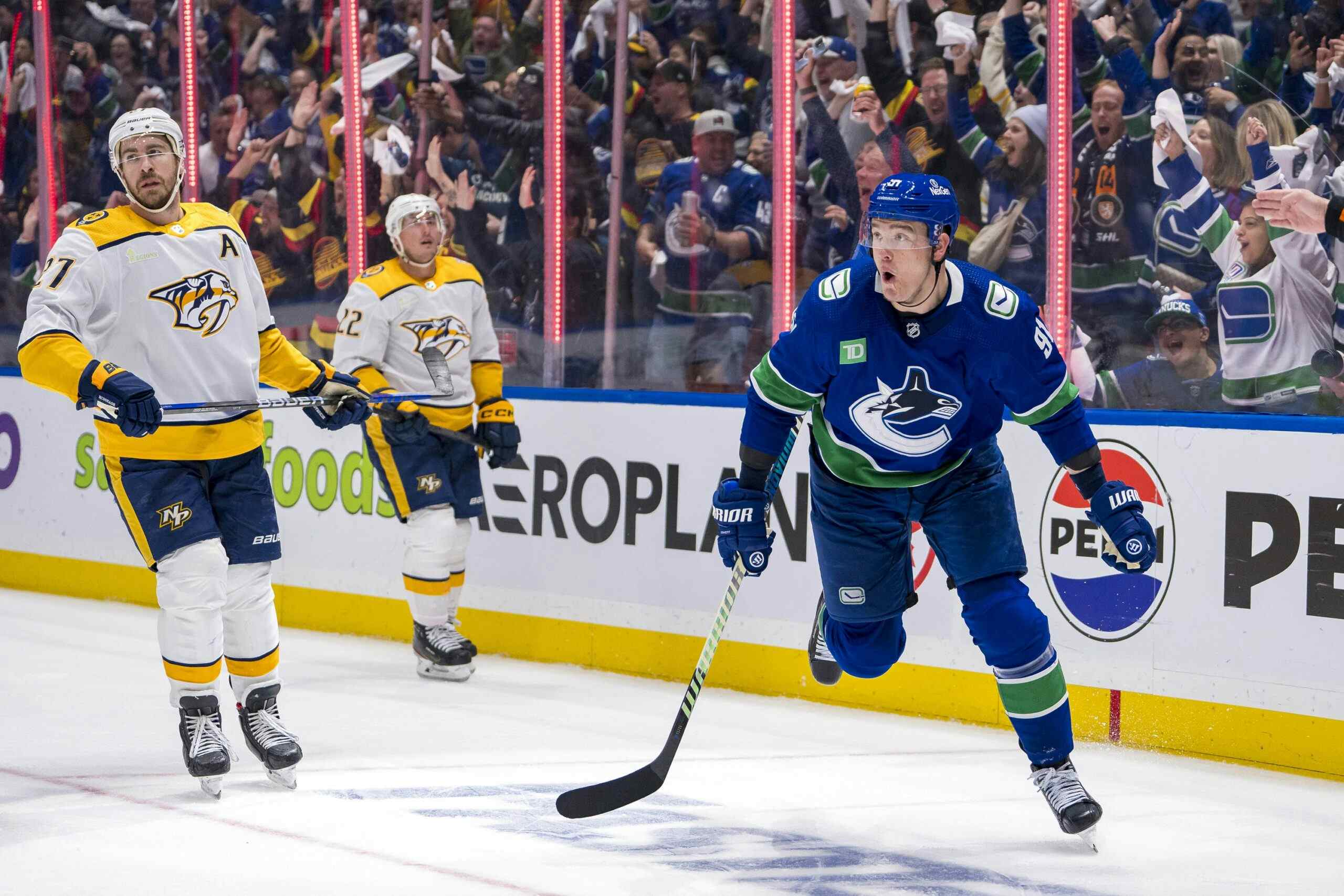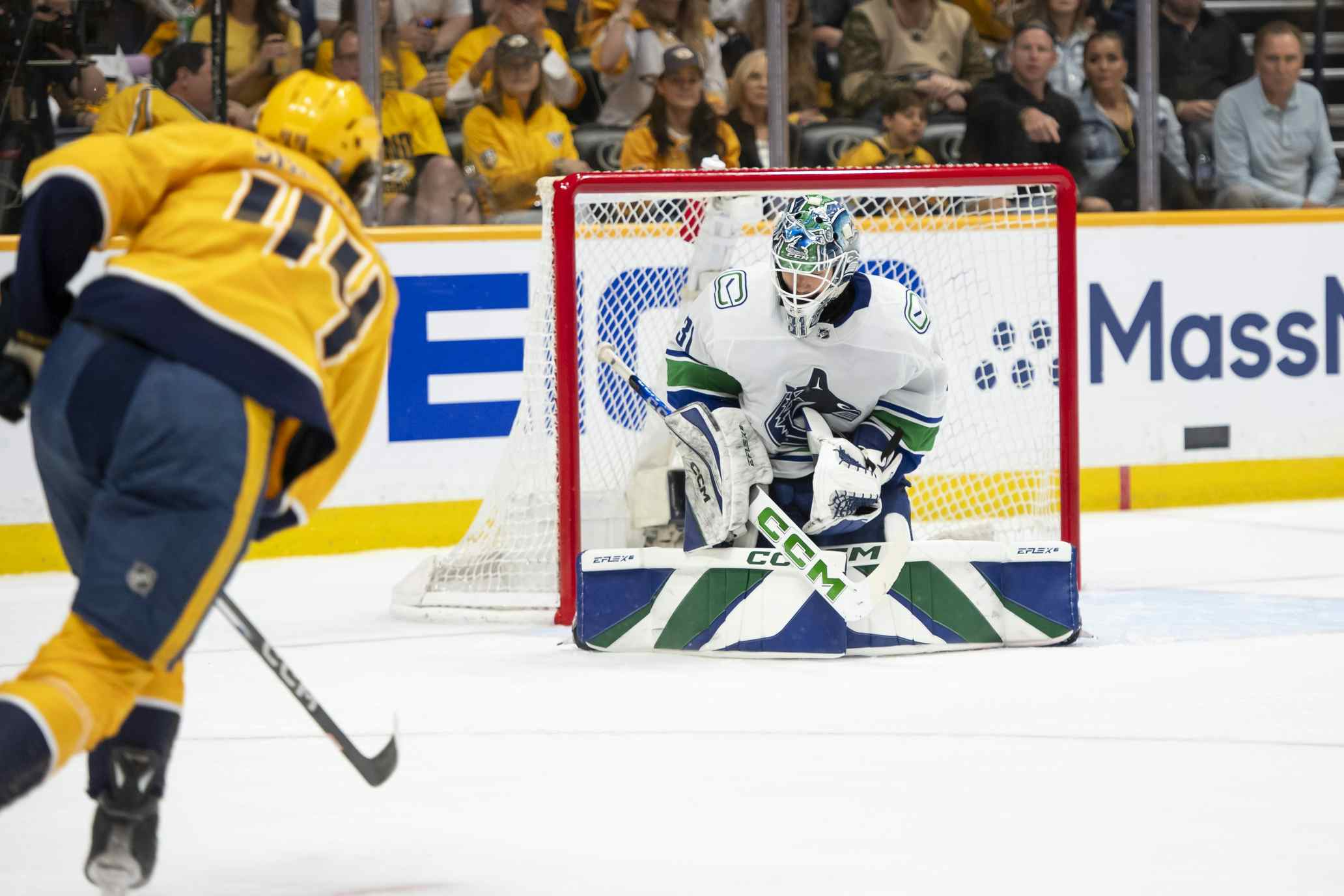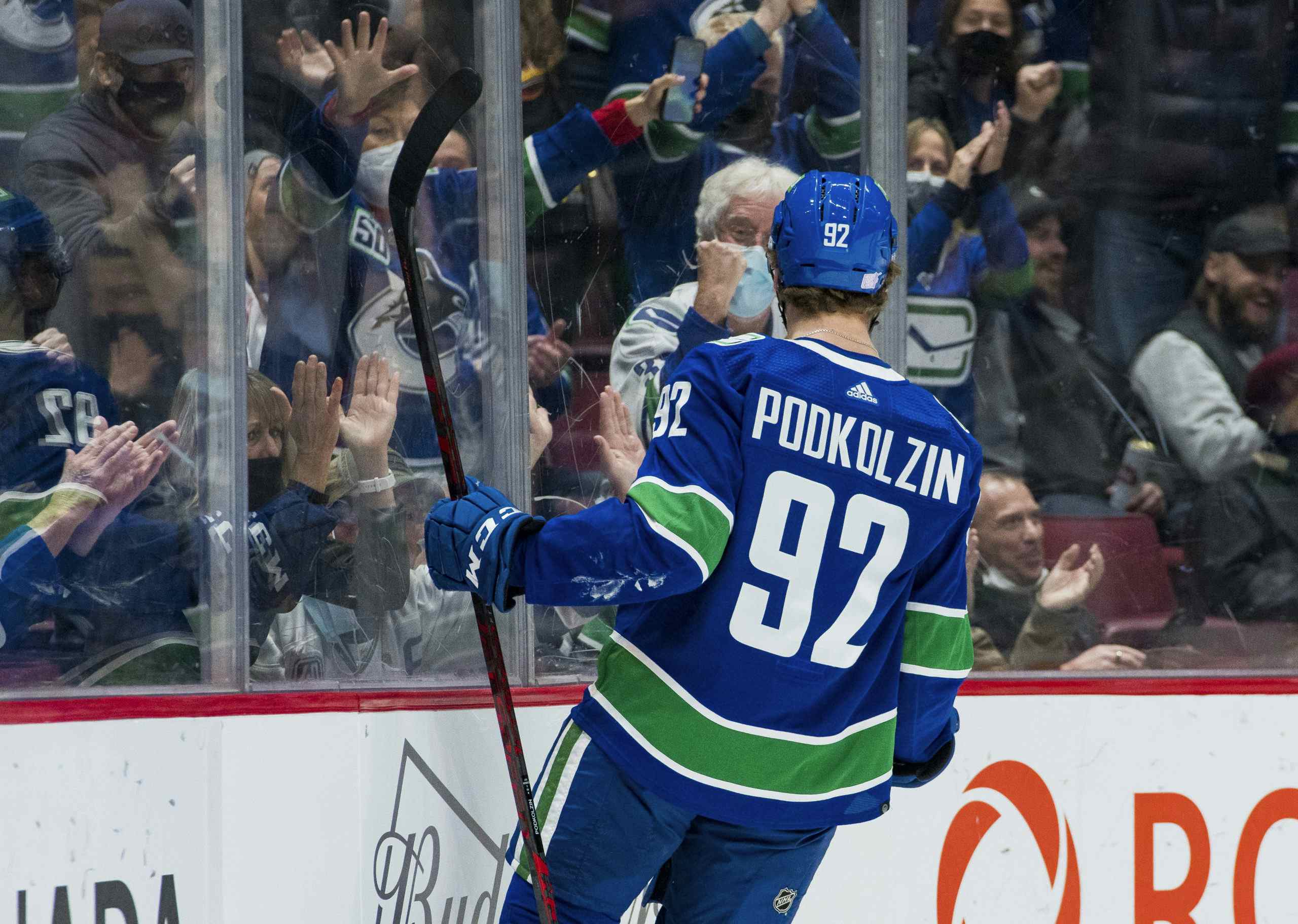First Look: Michael Ferland Deal Helps Canucks, But Causes Cap Crunch
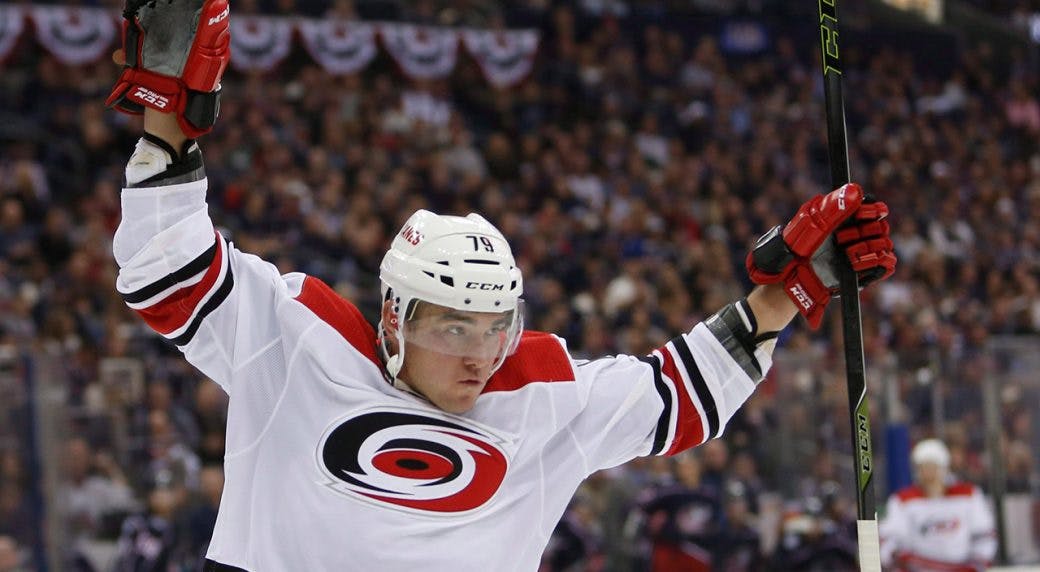
4 years ago
The Canucks made a significant addition to their middle-six on Wednesday morning, inking winger Micheal Ferland to a 4-year deal at $3.5 million AAV.
CanucksArmy and the analytics community at large have taken their fare share of criticism in this market for being too negative, but ultimately, we just work with what the Canucks give us. In this case, there’s a lot to like about the player they’ve acquired, even if the circumstances surrounding the contract are less than ideal, so let’s start by focusing on the positives.
Over the past three seasons, Ferland has been an effective winger for the Flames and Hurricanes, playing a physical game and adding some scoring bunch to the middle of their lineups. He’s also a massive pest who isn’t afraid to mix things u , as any Canucks fan who watched the team’s 2015 playoff against the Flames can attest to. The Canucks have been criticized for their lack of pushback in recent years, so Ferland seems like a natural fit stylistically.

In addition, the numbers mostly back up what we see from Ferland on the ice: he’s an above-average shooter with a decent two-way impact who can help a team’s power play, provided he isn’t overly relied upon. He’s finished in the red by relative Corsi and expected goals over the past three seasons, but he’s also played for some very strong teams. He’s not a play-driver by any means, but he can play in all situations without being a liability at either end of the ice, and is a vast improvement over most of the wingers who spent time in the Canucks bottom-six last season.
What’s perhaps most interesting about the signing is that it signals the Canucks are serious about taking the next step and becoming a playoff team next season. I’m not sure they’ll get there, but I’ll give them some credit here for doing their best to be competitive while Pettersson and Hughes are still on their ELCs. Teams are often too conservative when it comes to getting the most out of the cost-savings of having an elite player on an entry-level deal and while I can’t endorse most of the moves they’ve made over the past half-decade or so, I can at least respect that they seem to finally be ditching the half-measures they’ve undertaken over course of their so-called rebuild in favour of embracing a clear direction.
I was skeptical that simply adding J.T. Miller to their forward group would be enough to tangibly improve this team’s offensive fortunes, and I think the fact that the front office recognized that they needed to make significant changes to their forward group if they had any intention of qualifying for the playoffs is worthy of praise. The Canucks’ bottom-six has been atrocious for most of the past five years, and adding Ferland will go a long way towards fixing that, at least for the first two years of his contract. I’m still not convinced enough will go right for the Canucks to take the next step and finally look like a playoff team next season, but they have far more options in their middle-six now and have at least begun to address their lack of secondary scoring.
That’s the good news. The bad news is that while 27 is by no means ancient and it’s entirely possible Ferland remains a useful player up until the expiration of his contract, his physicality and history of concussion issues make him a prime candidate for early decline. In the long term, the Canucks have enough contracts coming off the books that they may have the flexibility to work around the last year or two of his deal if things go south, but there’s a certain amount of risk that comes with committing this kind of term to a physical, bottom-six player.
Ironically, it’s the short-term implications of this deal that are most concerning. They still need to sign Brock Boeser and have just over $5 million dollars in cap space to do so. Even the most conservative estimates would suggest that’s not going to be enough room, and assuming he signs for anywhere near EvolvingWild’s projected annual salary of $6.8 million, the Canucks are going to be in a position where they’ll be forced to shed money if they want to have Boeser in the lineup on opening night.
The prospect of the Canucks being in a position where they’re forced to make a deal is going to be enough to put a lot of Canucks fans on edge. The team hasn’t exactly been known for their ability to find themselves on the right side of negotiations even at the best of times, and they’ve now forced themselves into dealing from a position of weakness in any potential trade talks.
In a vacuum, the addition of Micheal Ferland makes the team better and tougher to play against; but as is always the case with this front office, considering the totality of the moves the Canucks have made this off-season should be enough to give some fans pause. Adding Ferland to the Canucks forward group is a win, but if bringing him in means they have to jettison a player like Jake Virtanen or Nikolay Goldobin (who has also yet to sign) to be cap-compliant in time for opening night, that’s going to dampen the positive effect of having him in the lineup.
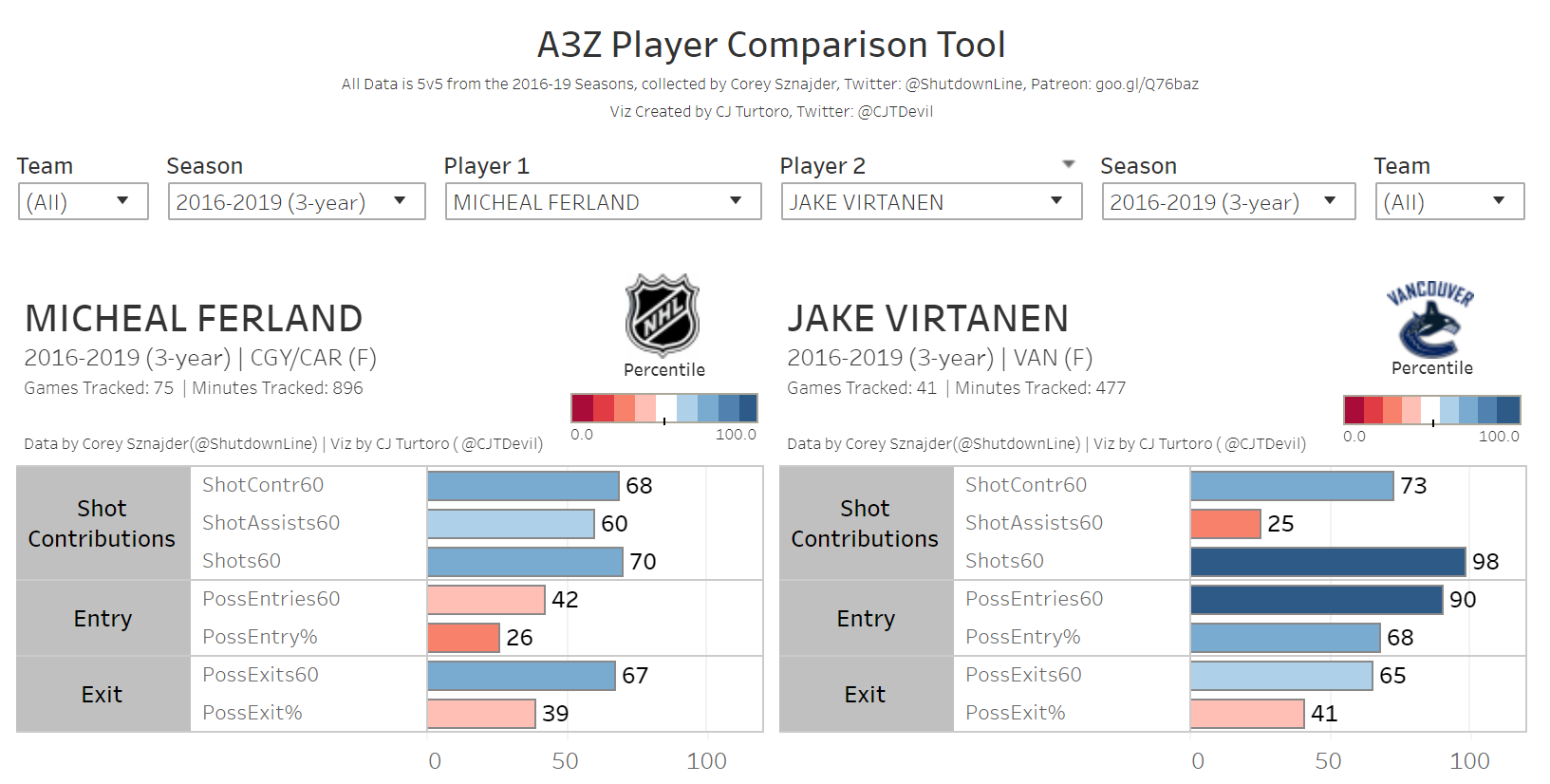
If the Canucks can actually manage to unload the salaries of Loui Eriksson and/or Brandon Sutter without having to deal any of their support pieces, this contract will look like a tidy piece of work, but I’m skeptical that they’re capable of pulling it off. The Toronto Maple Leafs had to give up a first round pick just to get rid of the final year of Patrick Marleau’s contract, so I can only imagine what the going price will be for the Canucks to rid themselves of three years of Loui Eriksson.
There’s no doubt that Micheal Ferland is a massive upgrade over some of the players that made appearances in the Canucks’ middle-six last season, but until we see how the Canucks’ cap situation plays out, it’s impossible to say if the addition is actually going to improve the Canucks fortunes next season.

